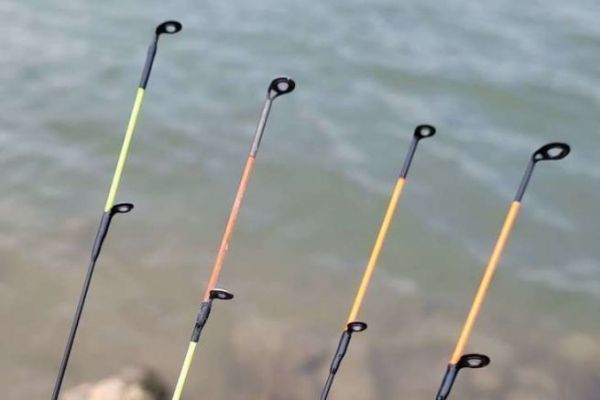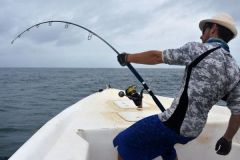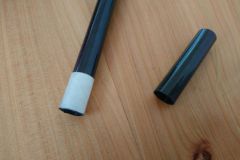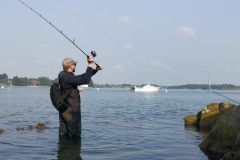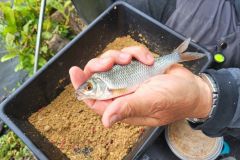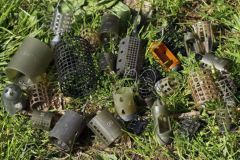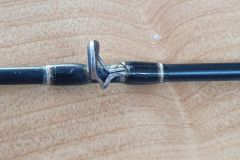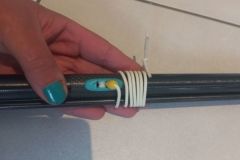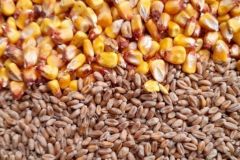Strength and hardness of the tip: the oz or ounces
One ounce (oz) is equivalent to 28.6 g.
The more sensitive the tip, the lower its ounce rating (0.5 or less). The harder the tip, the higher its rating in ounces (5 or 6 or more).
More rarely, some brands use color codes. This quotation is much less precise, even if the ounces are often only indicative. Indeed, from one brand to another and often within the range of the same brand, 1 oz is not worth 1 other oz! Technically, this power is calculated by hanging a weight on the tip of the rod horizontally until it bends at 90į... but that's the theory (the curve test so used by our carp friends). In practice, there can be important differences.
Choosing your feeder rod
The first and only mistake is to imagine that the weight of the feeder cast is the only factor that determines the strength of the tip. While this is not completely false, it is far from the truth in fishing.
In fact, the tip is the equivalent of the float's antenna. This antenna is largely independent of the weight supported by the float, but there is a balance to be respected. It is therefore useless to have an ultra-thin tip on a large float for river fishing. Indeed, its sensitivity will penalize you in the current and create false bites, or even make fishing impossible. A large tip on a light float is on the other hand a very useful combination to reduce sensitivity, especially when the wind is blowing and/or the bait used is heavy.
It is the same with the tip of the feeder rod. I have often used a 5 oz tip (theoretically 143 g) when fishing for barbel with 30 g of ballast and a 1 oz tip (theoretically 28.6 g) in the canal, while fishing at 57 m with a 60 g feeder.
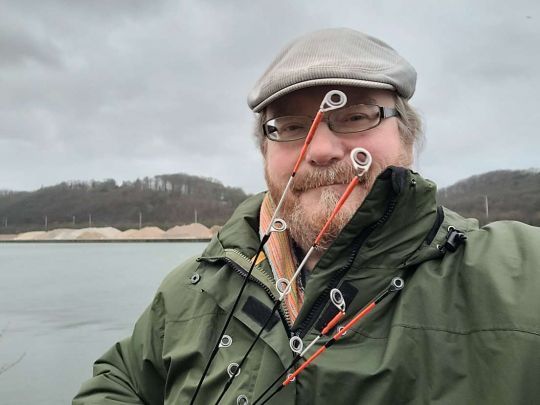
In fact, the important thing is that the tip does not bend more than 15 or 20į with the current and/or the wind, in order to always indicate correctly the bites, while adapting its hardness to the fish sought. My technique is quite simple: always use the thinnest tip possible, but as stiff as necessary.
- The wind and the current are the two most important criteria of choice.
- The distance will also play a role, because the farther you fish, the bigger the banner between the tip of the tip and the feeder will be, generating more catch to the elements.
- Finally, the weight thrown. It is, in fact, unbalanced to try to cast 100 g with a 1 oz tip, the weight of the feeder neutralizing the sensitivity of the tip and the tip not having enough nerve to participate in the casting.
Some benchmarks
I will conclude by giving you some guidelines on which you can base your choice, but which you will have to go beyond in order to best adapt to the conditions:
- in ponds and calm, not too deep channels: 0.75 to 1 oz
- in deeper lakes and channels with more current: 1 to 2 oz
- in river : 2 to 6 oz
- in fast rivers on fighting fish: 3 to 5 oz
- in carpodrome : 1.5 to 2 oz
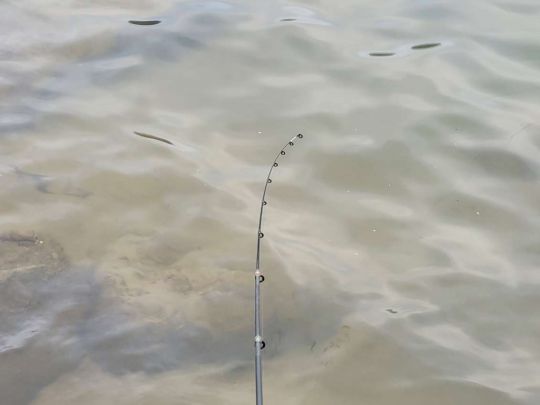
Fishing is a balance between nature, the fisherman and his equipment. The fish is the most important of the three, while technique comes last, well after tactics. It is the only parameter you can control 100%, so make the right choice!

 /
/ 